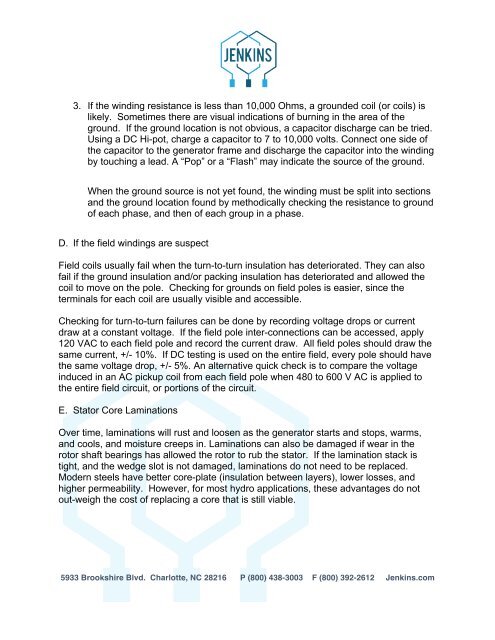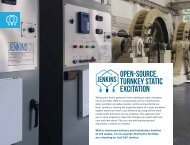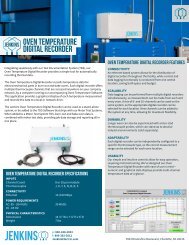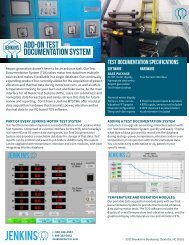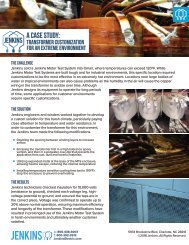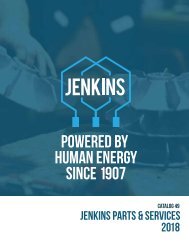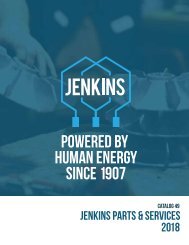Jenkins Options for Generator Rewind Whitepaper
Create successful ePaper yourself
Turn your PDF publications into a flip-book with our unique Google optimized e-Paper software.
3. If the winding resistance is less than 10,000 Ohms, a grounded coil (or coils) is<br />
likely. Sometimes there are visual indications of burning in the area of the<br />
ground. If the ground location is not obvious, a capacitor discharge can be tried.<br />
Using a DC Hi-pot, charge a capacitor to 7 to 10,000 volts. Connect one side of<br />
the capacitor to the generator frame and discharge the capacitor into the winding<br />
by touching a lead. A “Pop” or a “Flash” may indicate the source of the ground.<br />
When the ground source is not yet found, the winding must be split into sections<br />
and the ground location found by methodically checking the resistance to ground<br />
of each phase, and then of each group in a phase.<br />
D. If the field windings are suspect<br />
Field coils usually fail when the turn-to-turn insulation has deteriorated. They can also<br />
fail if the ground insulation and/or packing insulation has deteriorated and allowed the<br />
coil to move on the pole. Checking <strong>for</strong> grounds on field poles is easier, since the<br />
terminals <strong>for</strong> each coil are usually visible and accessible.<br />
Checking <strong>for</strong> turn-to-turn failures can be done by recording voltage drops or current<br />
draw at a constant voltage. If the field pole inter-connections can be accessed, apply<br />
120 VAC to each field pole and record the current draw. All field poles should draw the<br />
same current, +/- 10%. If DC testing is used on the entire field, every pole should have<br />
the same voltage drop, +/- 5%. An alternative quick check is to compare the voltage<br />
induced in an AC pickup coil from each field pole when 480 to 600 V AC is applied to<br />
the entire field circuit, or portions of the circuit.<br />
E. Stator Core Laminations<br />
Over time, laminations will rust and loosen as the generator starts and stops, warms,<br />
and cools, and moisture creeps in. Laminations can also be damaged if wear in the<br />
rotor shaft bearings has allowed the rotor to rub the stator. If the lamination stack is<br />
tight, and the wedge slot is not damaged, laminations do not need to be replaced.<br />
Modern steels have better core-plate (insulation between layers), lower losses, and<br />
higher permeability. However, <strong>for</strong> most hydro applications, these advantages do not<br />
out-weigh the cost of replacing a core that is still viable.<br />
5933 Brookshire Blvd. Charlotte, NC 28216 P (800) 438-3003 F (800) 392-2612 <strong>Jenkins</strong>.com


